7 Ways to Reengage Inactive Email Marketing Subscribers

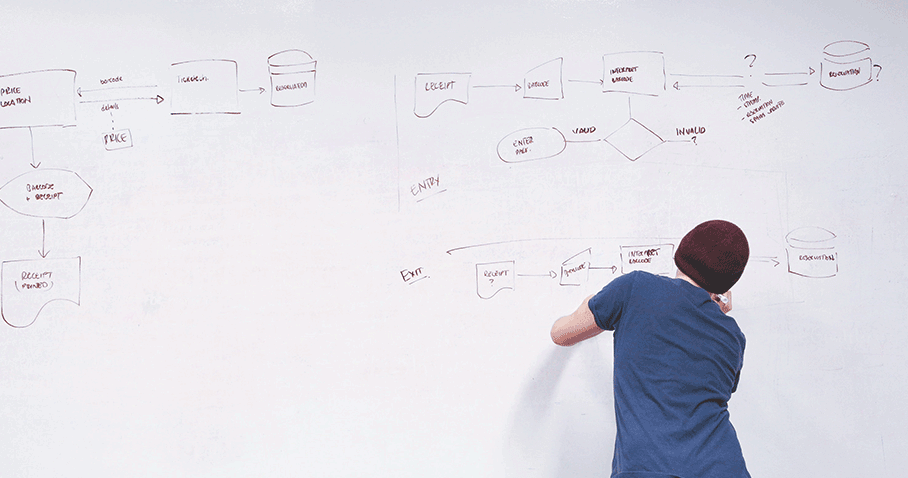
As a retailer, your business relies on keeping customers engaging and active, for as long as possible. Email marketing is an effective channel for nurturing subscribers and retaining customers through relevant campaigns and communications. In this blog, our email experts outline 7 great ways to reengage inactive email subscribers.
1. Identify inactive subscribers
What do you do when subscribers become disengaged? Do you drop them off your list? Or do you attempt to revive their engagement with your emails?
Firstly, you need to decide what constitutes an inactive subscriber. It varies from business to business and depends on the frequency of your email activity. For retailers who send a lot of emails, 3 months of inactivity would probably be a suitable threshold to trigger reengagement campaigns. Whereas, brands sending not much more than monthly newsletters or seasonal campaigns, then you're looking at more like 6 months.
What's important is that you define what constitutes an inactive or "lapsed" subscriber for your business and set up automated triggers to assign to dedicated reengagement campaigns.
2. Segment inactive subscribers
Not all inactive subscribers are the same. Each one has a unique history and different reasons for interacting with your brand. For instance, you may have some subscribers who like to consume your content but don't make purchases. Maybe they're waiting for a big offer or sales period.
Other subscribers may have made a purchase but never subsequently browsed your site. Perhaps they signed up to take advantage of a discount and hit the road with it.
You can segment your subscriber list according to different behaviours or you could stagger reengagement thresholds and simply segment according to last email open or last click through, etc.
Once you've completed your list segmentation, it's time to create a reactivation strategy and plan different reengagement campaigns for each segment.
2. Craft targeted email series for each segment
You'll need a series of emails for your reengagement campaigns, as your lapsed subscribers are already inactive and there's a good chance you'll need several cracks at reactivating them.
Try to determine what's holding back your least active subscribers from engaging and converting. Maybe they need more education about your products? Maybe price is a barrier? Or it could be down to the content not being relevant enough to their needs.
Delve into your data and try and find patterns from your subscriber behaviours. Use insights, intuition and key persuasion tactics to attempt to win them back. This could range from incentives (free shipping or product discounts), reaching out to subscribers to tailor their email preferences or even reminders of the benefits your brand offers.
Here's a great customer win-back email example from asos, which shows subscribers what their current preferences are, an option to change the types of emails and offers they receive and also a very clear option to opt-out:
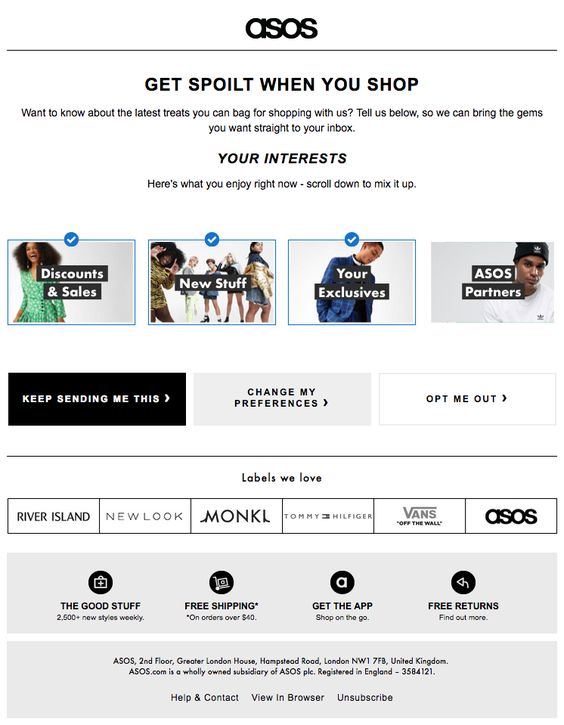
Create a reengagement email series, testing different persuasion tactics, before leading to an ultimatum-style final reactivation attempt.
3. Give subscribers another way to engage
Not everyone who signs up for subscriber lists spend a lot of time reading and engaging with brand emails. They may just prefer to engage with retail brands via social media or other channels. So rather than writing them off, why not give them a different option?
For instance, you can invite them to follow on your other channels, such as Facebook, Twitter, YouTube or even to get SMS news and offers. Use reengagement emails to invite subscribers to interact with your brand in a different way.
This reengagement email example from Missguided demonstrates several win-back tactics:
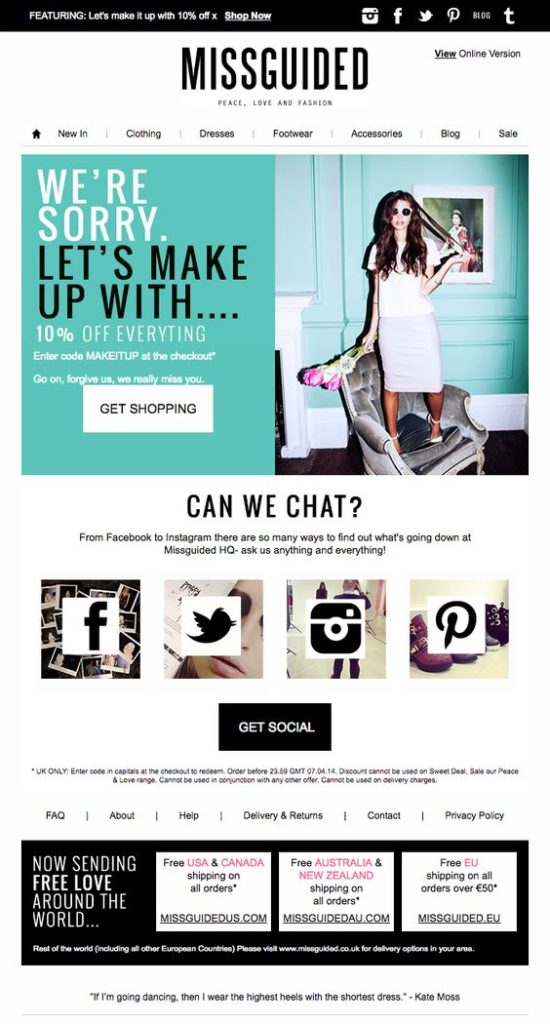
The campaign uses emotive copywriting, a site-wide discount code and an invitation to join Missguided's different social channels, for customers who prefer to engage with the brand outside of the inbox.
4. Show off all that value they're missing
You've tried to reengage your subscribers with personalised offers and other persuasion tactics, but many aren't taking the bait. There's still hope. One option is to focus on the value your brand emails and products, which they're missing out on.
You can do this by listing all your benefits or showcasing them in a video demonstration. Take a look at how Chain Reaction Cycles decided to do it:
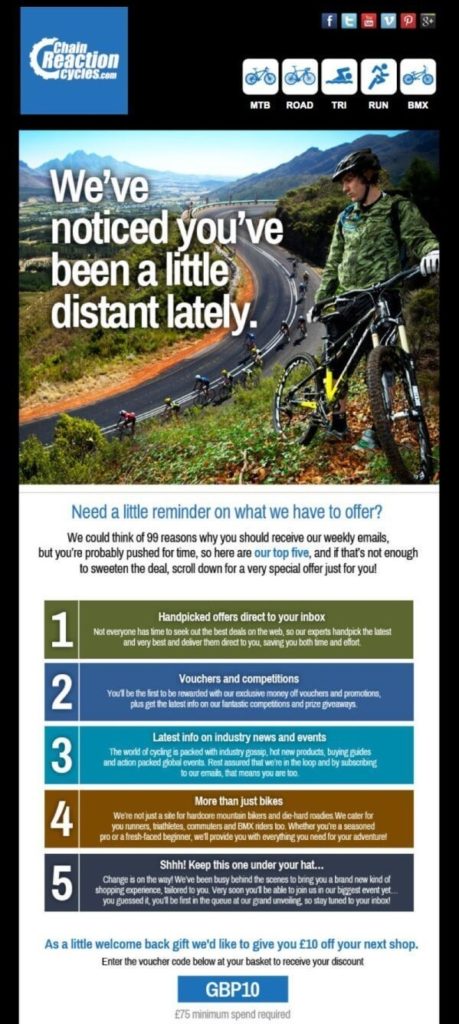
After displaying the brand's benefits, they offer inactive subscribers a discount. So after you entice your readers, give them a reason to act straightaway with an offer.
5. Don't fear unsubscribes
You win some, you lose some. The key is in how you handle the situation. And when it comes to your inactive subscribers, you can give them advance notice you're about to cut ties with them and remove them from your subscriber list...unless they want to stay after all!
In some cases, this will help kindle their interest in your brand and products. And for others, they'll simply ignore the warning. But don't worry – the idea is to keep the ones that are more likely to become active customers again. You should be used to seeing (or even sending) these type of ultimatum emails during the GDPR repermissioning period, earlier in 2018.
Take inspiration from the tactics used by retailers for repermissioning campaigns, such as this example from New Look:

We put together a Guide to Repermissioning, which includes 50 great brand examples. Use this free guide to inspire your reengagement campaigns.
6. Give your subscribers options
Here's another option you can give your subscribers – a choice between different products. It's an excellent way to engage them and get subscribers to convert at the same time.
Birchbox did a great job of this by offering inactive subscribers two Rifle Paper Co. boxes:
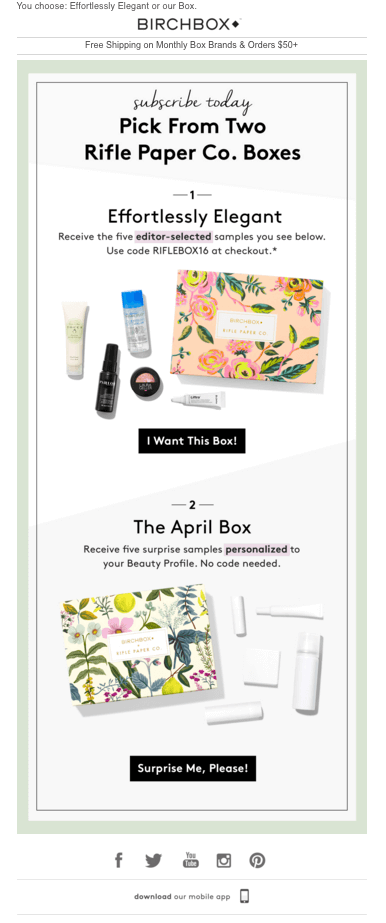
Playing on the desires of your prospects is no new tactic. We all know how much consumers love freebies, so it's a good way of offering value and reconnecting with them.
Summary
Don't underestimate the importance of reengaging inactive subscribers. Allowing them to bloat your email database will only negatively impact your numbers and it'll trash your deliverability too. It's essential to either remove them or reengage them.
And by far, it's much smarter to at least attempt to reconnect and win back some of these subscribers, so you can potentially convert them back into active customers.
Suggested Reading From The Blog
Most Popular Blogs
Top 10 Email Marketing Platforms for 2021
6 Minute Read
Editor's Picks
Meet our newest email superhero, Kiran Patel
2 Minute Read
Klaviyo Email & SMS Product Updates: October 2021
4 Minute Read
10 Ways to Improve Email Marketing Open Rates
6 Minute Read
